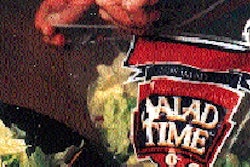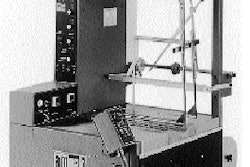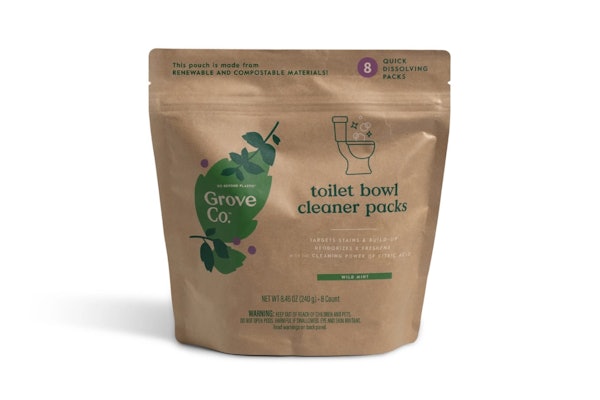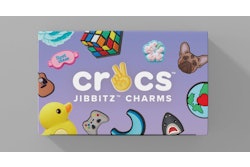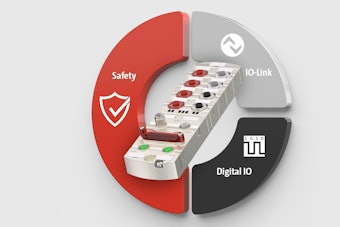Aseptic filling of fruit juices and drinks into bottles of polyethylene terephthalate is a concept beverage marketers around the world are watching closely. Shelf stability, product visibility, light weight, ease of handling, and resistance to shattering are a few of its attractions. Another advantage is that compared to hot-filling, used for glass and heat-set PET bottles, the high-temperature/short time processing used in aseptic packaging can deliver a product with a fresher, less "processed" taste and superior nutrition profile.
Now from France comes word of a new player in the aseptic-filling-of-rigid-plastic-containers game: a five-layer bottle coextrusion blown of high-density polyethylene/tie layer/ethylene vinyl alcohol/tie layer/HDPE. Joker, a prominent and privately held French beverage marketer based in Macon, introduced Pulpea Orange in the unusual bottle in June of 1995. Joker coextrusion blows the bottle in house on a Techne (Savena, Italy) system and fills it on an aseptic filler supplied by Remy, represented in North America by Geosaf Inc. (Montreal, Quebec, Canada). Bottles are sterilized with hydrogen peroxide in the Remy process.
Joker calls the bottle "BOTOP." (It's from "beaux," the French word for "beautiful," shortened in this case to "bo," and "top," referring to top quality.) According to marketing manager Chantal Roclore, shelf-stable orange juice in France is either hot-filled in glass bottles or filled aseptically in paperboard/foil juice boxes.
Marketing strategy
At Joker, the basic strategy is to pack what might be called "regular" orange juice, the kind made from concentrate, in aseptic juice boxes that retail for six francs ($1.21) per liter. At the high end is not-from-concentrate juice hot-filled in glass that retails for 11 francs ($2.23) per liter.
Pulpea Orange is aimed right between these choices. It's still made from concentrate because the strategy is to keep it more affordable than the premium juice. But it differs from "regular" orange juice not only because it has orange pulp but also because researchers at Joker have, says Roclore, come up with a way to make a juice that tastes more like real fresh fruit even though it's made from concentrate. Having developed such a new product, Joker wanted a package that was equally new.
So it turned to Elf Atochem (Philadelphia, PA) and together the two firms developed the 1-L BOTOP. Weighing 53 g, it incorporates Elf's Lacqtene polyethylene and Orevac tie layers, while the EVOH barrier layer is supplied by Nippon Kasei (Tokyo, Japan).
"It's been a great success," says Roclore. Sold throughout France for 8 francs ($1.62), the package is dated for a six-month shelf life from date of packaging. But Elf Atochem's packaging applications manager Laurence Bellenoue-Sauzedde says the six-month dating is probably on the conservative side. Tests conducted in her lab show nine months can be easily achieved.
U.S. comparisons
In the U.S., a near equivalent to the Joker bottle can be found in the 64-oz aseptically-filled plastic bottle of pure apple juice marketed by Mott's of Stamford, CT (see PW, March '94, p. 2). Along the same lines is the O Fraiche Waters line of flavored, noncarbonated waters aseptically filled in plastic bottles by Lyons-Magnus of Fresno, CA. The significant difference, however, is that these two U.S. packages are clear, monolayer PET.
Joker can't get away without an oxygen barrier layer of EVOH because certain flavor components in orange juice are notoriously sensitive to oxidation. Neither Mott's nor Lyons-Magnus is dealing with orange juice, so monolayer PET is perfectly adequate for their juices.
Barrier aside, clarity is another issue. Presumably the Joker bottle could employ PET in the place of HDPE and gain product visibility in the process. But that would have made the package more costly, and economics was a key objective in the development of the product/ package combination, says Roclore. An even more pressing reason for using opaque HDPE rather than clear PET is the issue of strategic positioning. Joker doesn't want consumers to compare Pulpea Orange with juice in clear glass bottles. They want their new product compared to an opaque aseptic box. The idea is that shoppers will prefer Pulpea Orange because it's in a bottle that's easier to handle and reclose than a juice box and because it tastes more like fresh fruit without costing as much as premium not-from-concentrate orange juice.
Interestingly, Elf Atochem is at work now in developing a polypropylene/EVOH bottle that would be transparent. According to Sauzedde, the key question at present is how to incorporate plant scrap back into the extruder. With HDPE/EVOH, it's not a problem. But when PP/EVOH scrap is reused, clarity suffers. Nevertheless, says Sauzedde, Elf expects to resolve the issue.
In the meantime, Pulpea Orange has proven so popular that it won the Product of the Year Award in the beverage category in the annual consumer survey conducted by Secodip, a prominent survey organization in France. And Joker is struggling to keep up with demand. That situation will be improved, however, as soon as a second filling line in Macon is complete.





